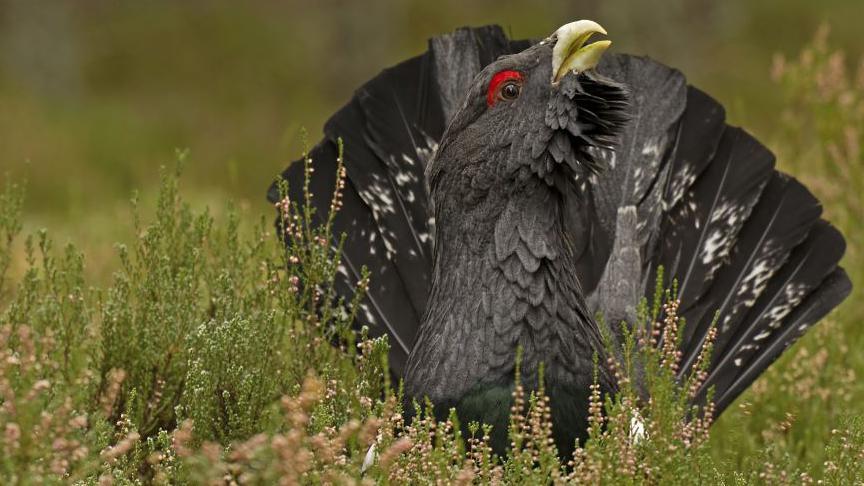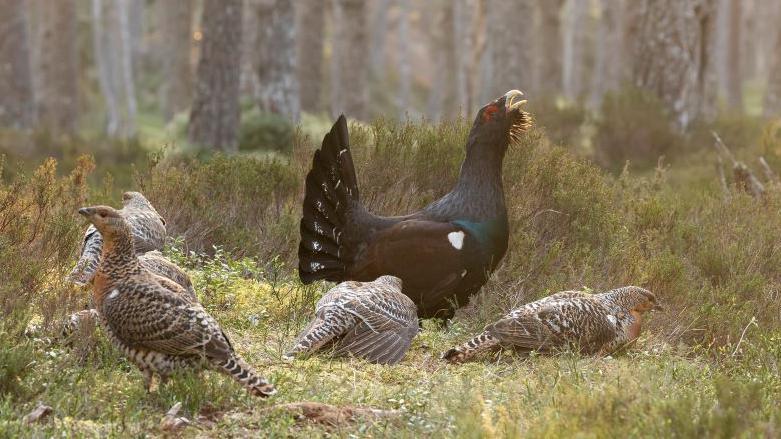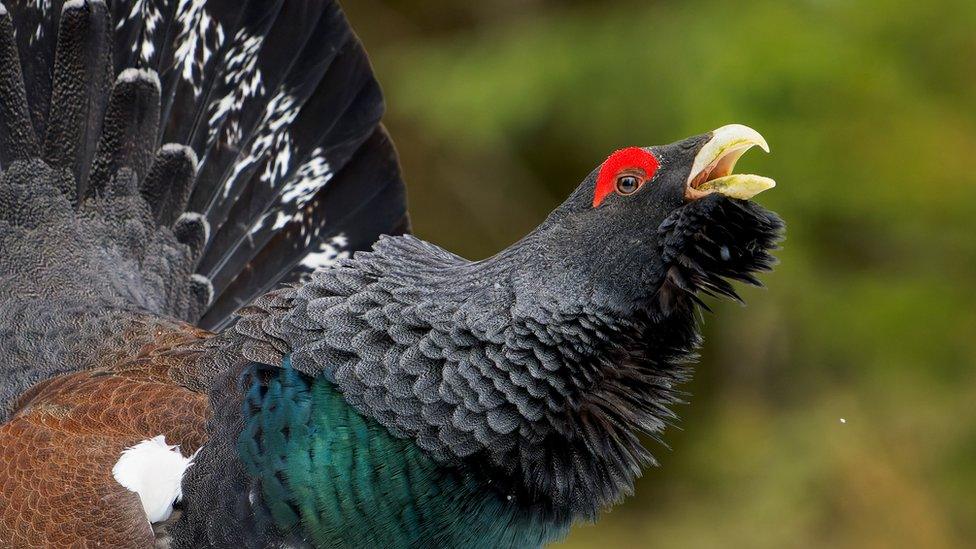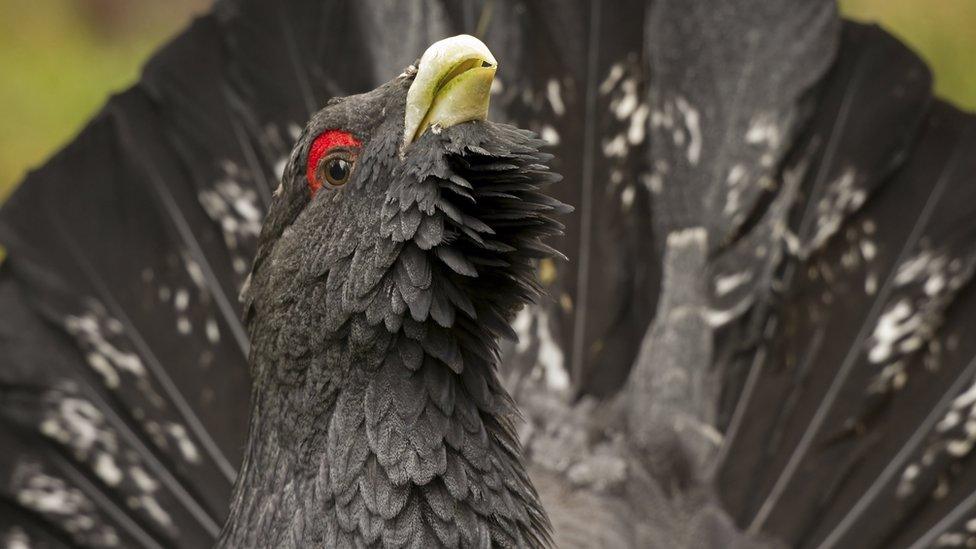First rise in capercaillie numbers in eight years

At a glance
Numbers of a rare bird have increased for the first time in eight years, according to conservationists
In the UK, capercaillie are only found in native pinewoods of upland Scotland
A survey this spring found 19 more males than last year
- Published
Numbers of critically-endangered capercaillie have increased for the first time in eight years.
Scotland is the only place in the UK with the large grouse, and overall the population had fallen to just 542 birds.
The latest survey of leks, external - areas where male birds compete for mates - found 168 males - 19 more than last year.
Conservationists said the rise in numbers was detected in populations in Strathspey in the Cairngorms National Park, and in Easter Ross in the Highlands.
The survey also suggested that while the genetic diversity of Scottish capercaillie was low there was no evidence it had suffered significantly.
Britain's native capercaillie were extinct by the 1780s and today's population is descended from birds reintroduced from Sweden since the 19th Century.
Further reintroductions have been suggested as a way of boosting the genetic pool.

A male capercaillie with females
Habitat loss and human disturbance to breeding seasons have been blamed for declining numbers.
There were warnings last year capercaillie could vanish from Scotland within the next 30 years.
This spring's increase has been welcomed by the Scottish government, which has asked the Cairngorms National Park Authority and NatureScot to lead a co-ordinated conservation action plan.
Biodiversity Minister Lorna Slater said: “The capercaillie is on the verge of extinction in Scotland, however new research shows that there is hope for the species.
"I know how much work has already gone into protecting one of Scotland’s most iconic birds, and we cannot let these efforts be in vain."
RSPB Scotland said it supported the new efforts aimed at improving capercaillie conservation.
- Published31 March 2023

- Published25 February 2022

- Published30 September 2022
